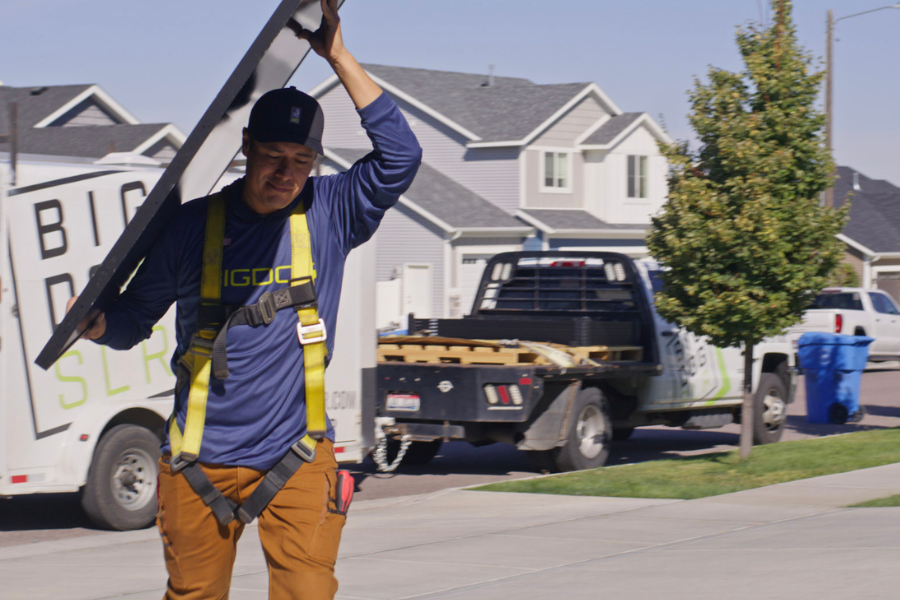Although solar residential systems vary from house to house, standard installations will have the same elements. The typical main components of a solar home system include the solar module, an inverter, a battery, a charge controller (sometimes known as a regulator), wiring and the support structure.

Solar Module (Panels)
The solar modules, or panels, are the most noticeable part of a solar home system. You’ll most likely see them on the roof of a home, and their appearance might vary slightly, depending on what kind of solar panels are purchased. The most common mono-crystalline solar panel is rectangular and made up of multi-layered cells that create an electric current. The current interacts with the sun’s photons to harvest solar power.
Inverter
As the “brains” of the solar home system, the inverter converts the solar energy harvested by the panels into the current of your home’s electric grid. This way, when you use electricity, the inverter ensures you’ll first use the solar energy collected from your panels. Then, if you need additional energy, it can be taken from the electric grid as it would without solar panels. This is helpful during cloudy days, when your panels aren’t able to produce as much energy. There are different kinds of inverters, but almost all of them include a mobile app you can use to monitor the solar energy harvested and used.
Battery
Homeowners can choose to include a battery in their solar home installation. The battery stores any unused energy gathered from the solar panels. Then, when/if the power goes out where you live, you’ll still be able to have electricity in your home as long as there is energy available in the batteries.
Related post: Solar Panels and Electric Cars
Charge Controller
The charge controller’s main function is to protect the battery from damage. It regulates the voltages and currents to prevent the batteries from overcharging.
Wiring
The wiring of a solar home system refers to how the array solar panels are wired. There is more than one way to wire solar panels, but most are wired in parallel. That means each panel is wired back to a central wire coming from your roof, rather than from one panel to the next. One reason why most prefer parallel wiring is because all functioning panels can work at full power even if one panel malfunctions or breaks.
Support Structure
Most residential solar power systems are installed on sloped roofs. Big Dog Solar uses railed support structures for installing the solar panels. This type of solar panel structure allows panels to rest vertically and side by side, attached to two rails with clamps.
FAQs
What is the role of the solar module in a solar system?
Solar modules, or panels, are the most visible part of a solar system. They are typically installed on the roof and are responsible for harvesting solar energy by converting sunlight into electrical current through multi-layered cells.
How does an inverter work in a solar home system?
The inverter acts as the “brains” of the solar system by converting the DC energy collected from the solar panels into AC energy, which is used by your home’s electrical grid. It ensures that solar energy is used first before drawing additional power from the grid.
What is the purpose of a battery in a solar system?
A battery stores excess energy generated by the solar panels for later use. This stored energy can be used when the power goes out or during times when the solar panels are not producing enough energy, such as on cloudy days.
Why is parallel wiring commonly used in solar panel installations?
Parallel wiring connects each solar panel back to a central wire, allowing all panels to operate at full power even if one panel malfunctions or breaks. This setup ensures that the overall system remains efficient and functional.




.png)








